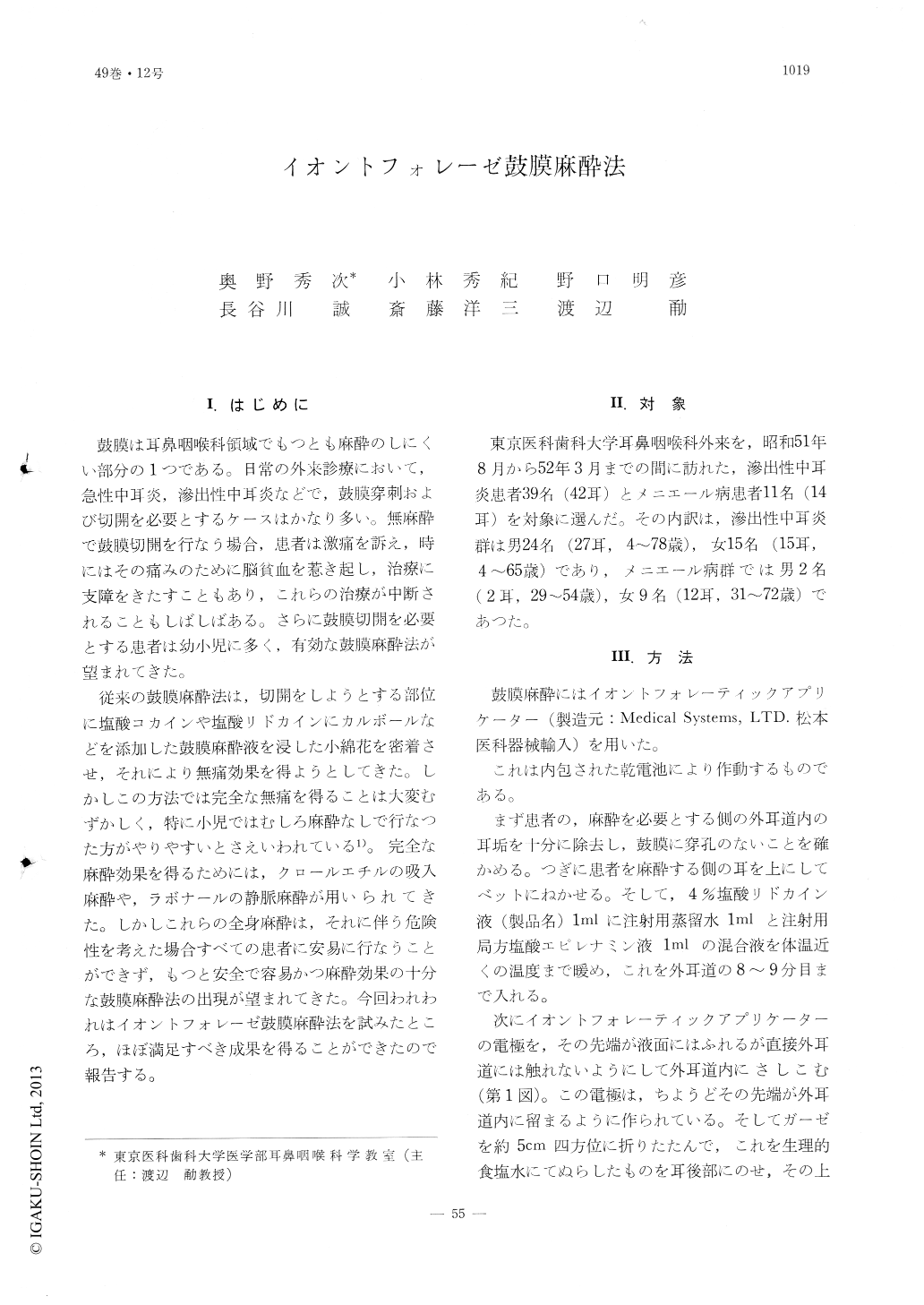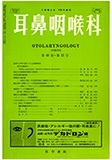Japanese
English
- 有料閲覧
- Abstract 文献概要
- 1ページ目 Look Inside
I.はじめに
鼓膜は耳鼻咽喉科領域でもつとも麻酔のしにくい部分の1つである。日常の外来診療において,急性中耳炎,滲出性中耳炎などで,鼓膜穿刺および切開を必要とするケースはかなり多い。無麻酔で鼓膜切開を行なう場合,患者は激痛を訴え,時にはその痛みのために脳貧血を惹き起し,治療に支障をきたすこともあり,これらの治療が中断されることもしばしばある。さらに鼓膜切開を必要とする患者は幼小児に多く,有効な鼓膜麻酔法が望まれてきた。
従来の鼓膜麻酔法は,切開をしようとする部位に塩酸コカインや塩酸リドカインにカルボールなどを添加した鼓膜麻酔液を浸した小綿花を密着させ,それにより無痛効果を得ようとしてきた。しかしこの方法では完全な無痛を得ることは大変むずかしく,特に小児ではむしろ麻酔なしで行なつた方がやりやすいとさえいわれている1)。完全な麻酔効果を得るためには,クロールエチルの吸入麻酔や,ラボナールの静脈麻酔が用いられてきた。しかしこれらの全身麻酔は,それに伴う危険性を考えた場合すべての患者に安易に行なうことができず,もつと安全で容易かつ麻酔効果の十分な鼓膜麻酔法の出現が望まれてきた。今回われわれはイオントフォレーゼ鼓膜麻酔法を試みたところ,ほぼ満足すべき成果を得ることができたので報告する。
In the field of otolaryngology the tympanic membrane has been considered as to be the most difficult region to be anesthetized. The anesthesia is usualy carried out by soaking a small piece of cotton in a solution of cocain or lidocain which is inserted in the external ear canal in a close contact with the tympanic membrane. This method is, however, not always effective. Particularly among the small children because the manipulation is, in itself, painful and they would not be cooperative. Consequently many doctors avoid using any anesthesia, at all, for the procedure.
Recently, however, effective anesthetic method has been reported by Comeau et al. in 1973 and by Echols et al. in 1975. The authors employed the present method of anesthesia among 50 patients, consisting of two groups, one of serous otitis media and the other of Meniere's disease, at the Department of Otorhinolaryngology, Tokyo Medical and Dental University, with success.
The present method is named iontophoretic anesthesia which is applicable in all cases.

Copyright © 1977, Igaku-Shoin Ltd. All rights reserved.


